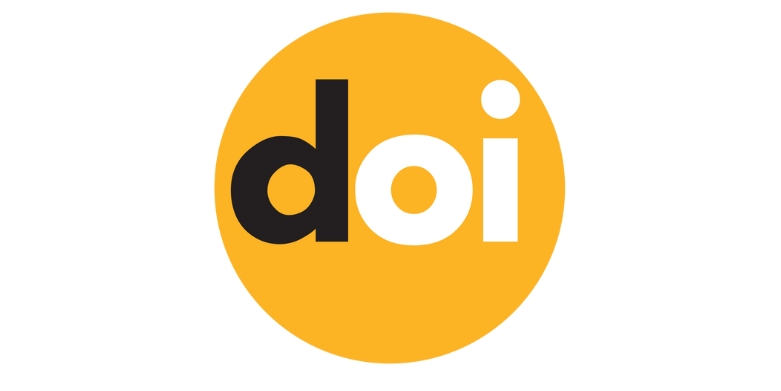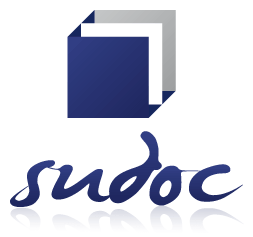Exploring Socio-Cultural, Constructivist, and Lifelong Learning Dimensions in Mobile Learning: A UNESCO Framework
DOI:
https://doi.org/10.63053/ijhes.66Keywords:
Mobile Learning, Learning Opportunities, Mobile Education, Distance EducationAbstract
The subject of mobile learning and training is a very well-known topic in the specialized fields of education in the world today, this type of learning and training is independent of time and place, especially with the increasing progress of mobile technologies and the universal and relatively fair distribution of these technologies at the level The world, especially in remote areas with few educational resources, has enjoyed a good global fortune, so that most of the international organizations and institutions around the world that have a hand in the field of education, especially public education, have taken advantage of the opportunities provided in The platform of these technologies and communication based on it have benefited a lot to achieve their educational goals, which is currently the world organization of UNESCO, although it seems that in our country despite the provision of many infrastructures of communication and technology The issues associated with this issue are still largely neglected, if not unknown, but the widespread reflection of such types of education at the world level cannot be kept out of sight and this accelerated global movement cannot be avoided. In this article, the problem is summarized Mobile learning has been discussed from a theoretical point of view, the fields of emergence and development of learning and mobile education all over the world and the unique efforts of the UNESCO World Organization to improve the knowledge and awareness of people by taking advantage of the opportunities of this type of education and prominent projects. And its universality is mentioned, mobile education is compared with distance education and the goals of this type of education are stated. In the end, several researches conducted in the country on mobile learning and education are given.
References
Barzegar, Razieh and Samieh Kazemian, 2013, Mobile learning in the 21st century: Approaches and opinions, National Electronic City Conference, Hamedan, Hamedan Islamic Azad University, http://www.civilica.com/Paper-IAUHNCEC01- IAUHNCEC01_023.html.
Tajri Moghadam, Maryam, Pazeshki Rad, Gholamreza and Shabanali Fami, Hossein, 2013, investigation of the attitude of agricultural promotion experts of Razavi Khorasan Province towards the use of mobile phones in promotional activities, Journal of Agricultural Promotion and Education Research, Year 5, Number 4 (20), pp. 59-68.
Khosravi, Najmeh, Barat Dastjardi, Nagin, and Amirtimori, Mohammad Hassan, (2014), factors affecting mobile learning in medical education based on the FRAME model, Iranian Journal of Education in Medical Sciences 14(3), pp. 206-215.
Zamani, Bibi Ishrat, Bebri, Hassan and Mousavi, Setareh, 2013, factors related to the attitude of Isfahan medical students to accept learning through mobile phones using the technology acceptance model, development steps in medical education, Journal of the Center for Studies and Development of medical education, ninth volume, second issue, pp. 110-117.
Sarani, Hadi and Aiti, Mohsen, 2014, The effect of using mobile phones (short message) on learning English vocabulary and students' attitudes. Scientific Research Quarterly, Research in Curriculum Planning - Islamic Azad University, Khorasgan Branch, 2(13), 48-60.Aderinoye, R. A., Ojokheta, K. O., & Olojede, A. A. (2007). Integrating mobile learning into a nomadic education programme in Nigeria: Issues and perspectives. The International Review of Research in Open and Distributed Learning, 8(2). DOI: https://doi.org/10.19173/irrodl.v8i2.347
Belalcázar, C. (2015). Mobile Phones & Literacy: Empowerment in Women's Hands: a Cross-case Analysis of Nine Experiences. UNESCO, Paris, France.
Burden, K., & Kearney, M. (2016). Future scenarios for mobile science learning. Research in Science Education, 1-22. DOI: https://doi.org/10.1007/s11165-016-9514-1
Chipchase, J. (2008). Reducing illiteracy as a barrier to mobile communication. Handbook of Mobile Communication Studies. Cambridge, ma: mit, 79-89. DOI: https://doi.org/10.7551/mitpress/9780262113120.003.0007
Crompton, H., & Burke, D. (2018). The use of mobile learning in higher education: A systematic review. Computers & Education, 123, 53-64. DOI: https://doi.org/10.1016/j.compedu.2018.04.007
Crow, R., Santos, I. M., LeBaron, J., McFadden, A. T., & Osborne, C. F. (2010). Switching gears: moving from e-learning to m-learning. Journal of online learning and teaching, 6(1), 268.
Daniels, H., Edwards, A., Engeström, Y., Gallagher, T., & Ludvigsen, S. R. (Eds.). (2013). Activity theory in practice: Promoting learning across boundaries and agencies. Routledge. DOI: https://doi.org/10.4324/9780203609439
Engeström, Y. (2006). Activity theory and expansive design. Theories and practice of interaction design, 3-23.
Georgiev, T., Georgieva, E. and Smrikarov, A. (2004). ME-Learning: A new stage of E-Learning. Proceedings International Conference on Computer Systems and Technologies, CompSysTech‘ 2004, IV.28, 1-5. DOI: https://doi.org/10.1145/1050330.1050437
Guy, R. (Ed.). (2009). The evolution of mobile teaching and learning. Informing Science.
Kraut, R. (2013). UNESCO policy guidelines for mobile learning. France: UNESCO.
Kusujiarti, S., & Kusdarjito, C. (2021). Gig-economy and knowledge society:: Avoiding the Middle-Income Trap. Proceedings of Indonesia Focus, 1(1), 6-6.
Li, J., Tang, Y., Fu, Y., Yan, Y., & Xiao, X. (2018, December). Teaching Reform of Algorithm Design and Analysis Course Based on" Project Oriented+ Autonomous Learning+ Practical Training". In 2018 3rd International Conference on Education, E-learning and Management Technology (EEMT 2018) (pp. 312-315). Atlantis Press. DOI: https://doi.org/10.2991/iceemt-18.2018.60
Mehdipour, Y., & Zerehkafi, H. (2013). Mobile learning for education: Benefits and challenges. International Journal of Computational Engineering Research, 3(6), 93-101.
Miyazawa, I. (2009, November). Literacy promotion through mobile phones. In The 13th UNESCO-APEID International Conference and World Bank-KERIS High-Level Seminar on ICT in Education Project Briefing Paper.
Oberer, B., & Erkollar, A. (2013). Mobile learning in higher education: A marketing course design project in Austria. Procedia-Social and Behavioral Sciences, 93, 2125-2129. DOI: https://doi.org/10.1016/j.sbspro.2013.10.177
O'Malley, C. & Stanton, D. (2002). Tangible Technologies for Collaborative Storytelling. Birmingham:
Pachler, N., Bachmair, B., & Cook, J. (2009). Mobile learning: Structures, agency, practices. Springer Science & Business Media. DOI: https://doi.org/10.1007/978-1-4419-0585-7
Paulins, N., Balina, S., & Arhipova, I. (2015). Learning content development methodology for mobile devices. Procedia Computer Science, 43, 147-153 DOI: https://doi.org/10.1016/j.procs.2014.12.020
Quinn, C. (2000). mLearning: Mobile, wireless, in-your-pocket learning. LiNE Zine, 2006.
Sembiring, J., Ambiyar, A., Verawardina, U., Edi, F., & Dakhi, O. (2022). Mobile Learning: Learning Tools in the Era of Industrial Revolution 4.0. Edumaspul: Jurnal Pendidikan, 6(2), 3217-3224.
Sharples, M. (2005). Learning As Conversation Transforming Education in the Mobile Age (pp. 147-152).
Sharples, M., Arnedillo-Sánchez, I., Milrad, M., & Vavoula, G. (2009). Mobile learning. In Technology-enhanced learning (pp. 233-249). Springer Netherlands. DOI: https://doi.org/10.1007/978-1-4020-9827-7_14
Sharples, M., Taylor, J., & Vavoula, G. (2005, October). Towards a theory of mobile learning. In Proceedings of mLearn (Vol. 1, No. 1, pp. 1-9).
Shuler, C. (2009). Pockets of potential: Using mobile technologies to promote children's learning.
Torres, R. M. (2011). 3 Lifelong learning: moving beyond Education for All (EFA). Conceptual evolution and policy developments in lifelong learning, 40.
Traxler, J. (2005, June). Defining mobile learning. In IADIS International Conference Mobile Learning (pp. 261-266)
Traxler, J. (2009). Learning in a mobile age. International Journal of Mobile and Blended Learning (IJMBL), 1(1) DOI: https://doi.org/10.4018/jmbl.2009010101
Downloads
Published
How to Cite
Issue
Section
License
Copyright (c) 2024 Authors

This work is licensed under a Creative Commons Attribution 4.0 International License.
The journal is licensed under a Attribution 4.0 International (CC BY 4.0).
You are free to:
- Share — copy and redistribute the material in any medium or format for any purpose, even commercially.
- Adapt — remix, transform, and build upon the material for any purpose, even commercially.
- The licensor cannot revoke these freedoms as long as you follow the license terms.
Under the following terms:
- Attribution - You must give appropriate credit , provide a link to the license, and indicate if changes were made . You may do so in any reasonable manner, but not in any way that suggests the licensor endorses you or your use.
- No additional restrictions - You may not apply legal terms or technological measures that legally restrict others from doing anything the license permits.












